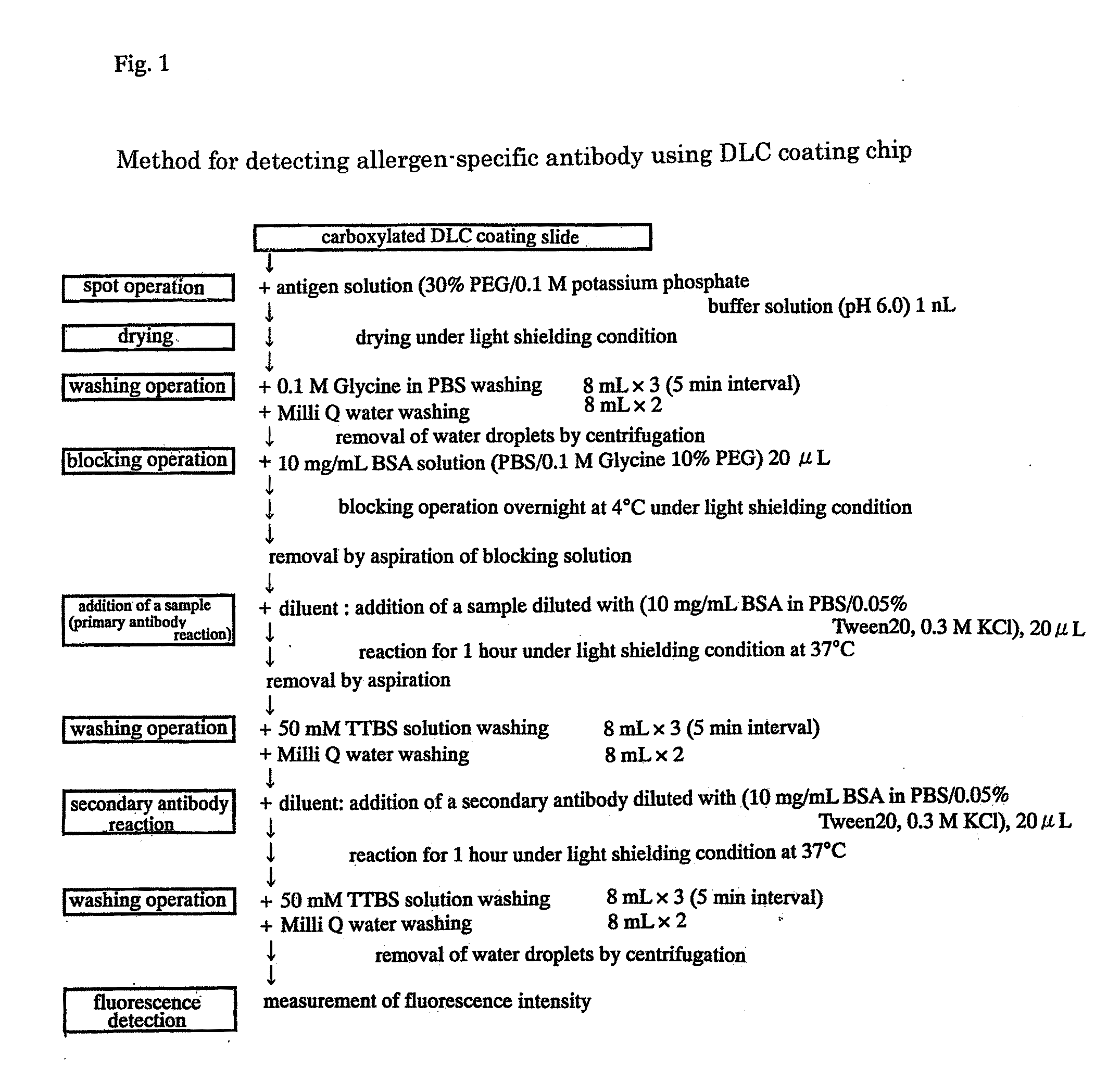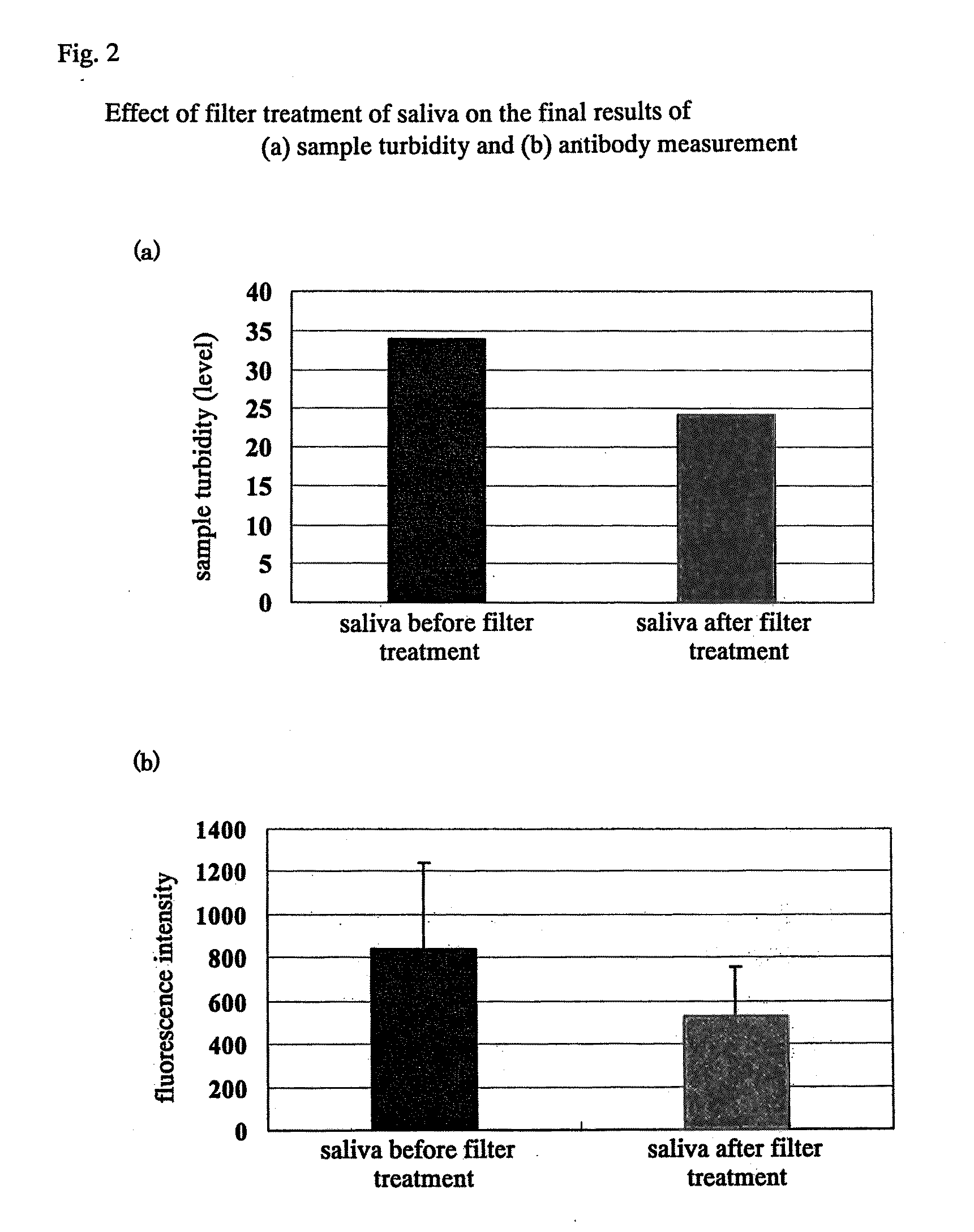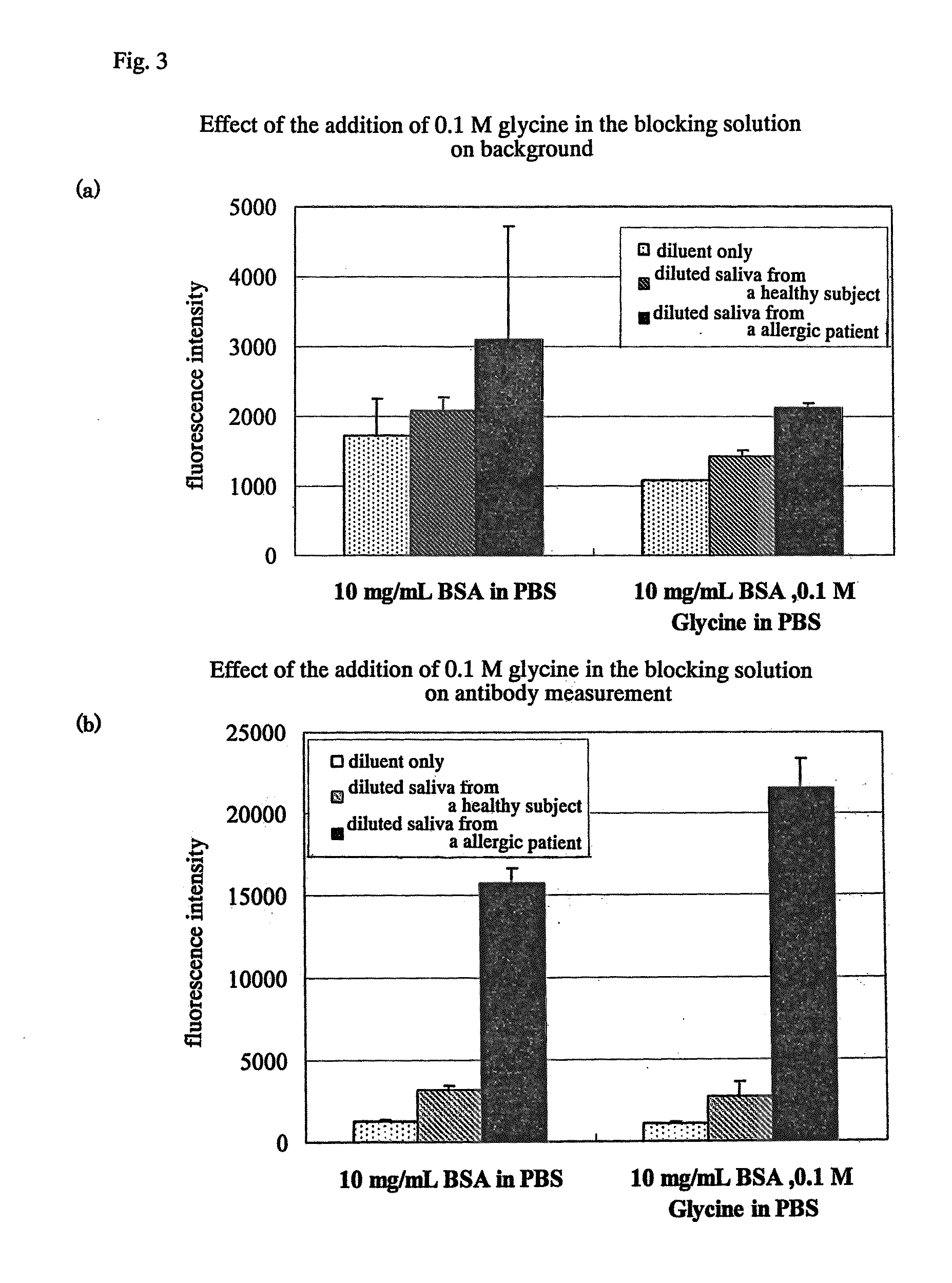Determination method for allergic disease
- Summary
- Abstract
- Description
- Claims
- Application Information
AI Technical Summary
Benefits of technology
Problems solved by technology
Method used
Image
Examples
example 1
Experiment Materials
[0041]Gene Slide DLC (Toyo Kohan CO., Ltd.), 384-well flat bottom-microplate (CORNING), reaction plate (SANPLATEC) and MILLEX GV Filter Unit 0.22 μm (MILLIPORE) were purchased for use. Ovoalubumin (OVA) (SIGMA), ovomucoid (OVM), conalubumin (SIGMA), α-casein (SIGMA), β-casein (SIGMA), α-lactoalubumin (SIGMA), β-lactoglobulin (SIGMA), Human Serum Immunoglobulins G, A and M (67 / 086) (NIBSC), Goat anti-human IgA (ZYMED), and Cy3™ Protein ArreyDyePack (Amersham Biosciences) were purchased for use. Further, 0.1 M potassium phosphate buffer solution (KPB) pH 6.0 / 30% PEG, 0.1 M glycine in PBS, 10 mg / mL Bovine serum albumin (BSA) / 0.1 M glycine 10% PEG, 10 mg / mL BSA / 0.05% Tween 20 / 0.3 M KCl, 50 mM Tris-HCl (pH 7.5), 150 mM NaCl and 0.05% Tween20 (TTBS) were used.
[Measurement Procedures]
[0042]Gene Slides (R) which have been activated have been purchased, and antigen proteins were diluted to a concentration of 10 to 75 fmol / mL with 0.1 M potassium phosphate buffer solution ...
example 2
[0048]Saliva collection was performed by letting a subject bite a sponge and transferring saliva into a collection recipient. Specifically, a cylindrical sponge was introduced into the mouth, and bit for about 45 seconds, paying attention to accidental ingestion, and dribble was absorbed. Then saliva was squeezed from the sponge removed from the mouth and collected in the recipient. The collected sample was stored in a frozen state (−20° C. or under) until measurement.
[Pretreatment of Saliva Sample]
[0049]Saliva was subjected to pressure filtration with a low protein-adsorbing filter of 0.45 to 0.2 micron (MILLEX GV Filter Unit 0.22 μm (MILLIPORE) filter) to eliminate influence from food residues. For the elimination level of food residues, the measurable standard level was assessed by turbidity (see FIG. 2(a)), and for each sample, the background fluorescence intensity was measured under the conditions at the time of allergen-specific antibody level measurement (see...
example 3
Conditions for Suppressing Nonspecific Reaction Necessary to Measure Allergen-Specific Antibodies in Saliva
1. Use of Glycine and Polyethylene Glycol in the Washing Solution and Blocking Solution for Suppressing Nonspecific Reactions
[0050]Conventionally, a solution comprising Tris (Tris-HCl) was used for washing or blocking after immobilizing antigen protein. A solution added with 0.1 M glycine was used for the washing solution and blocking reagent after immobilizing the antigen protein in order to suppress nonspecific reactions. Glycine is an amino acid with the smallest molecular weight, and which influence on the steric structure of the immobilized antigen protein is estimated to be small. As a result, the background signal (fluorescence intensity) was decreased about 30 to 40%, and the relative fluorescence intensity measured in the antigen antibody reaction with the allergen increased. Further, the reactivity of the antibody bound to the antigen was also increased. From the abov...
PUM
 Login to View More
Login to View More Abstract
Description
Claims
Application Information
 Login to View More
Login to View More - R&D
- Intellectual Property
- Life Sciences
- Materials
- Tech Scout
- Unparalleled Data Quality
- Higher Quality Content
- 60% Fewer Hallucinations
Browse by: Latest US Patents, China's latest patents, Technical Efficacy Thesaurus, Application Domain, Technology Topic, Popular Technical Reports.
© 2025 PatSnap. All rights reserved.Legal|Privacy policy|Modern Slavery Act Transparency Statement|Sitemap|About US| Contact US: help@patsnap.com



